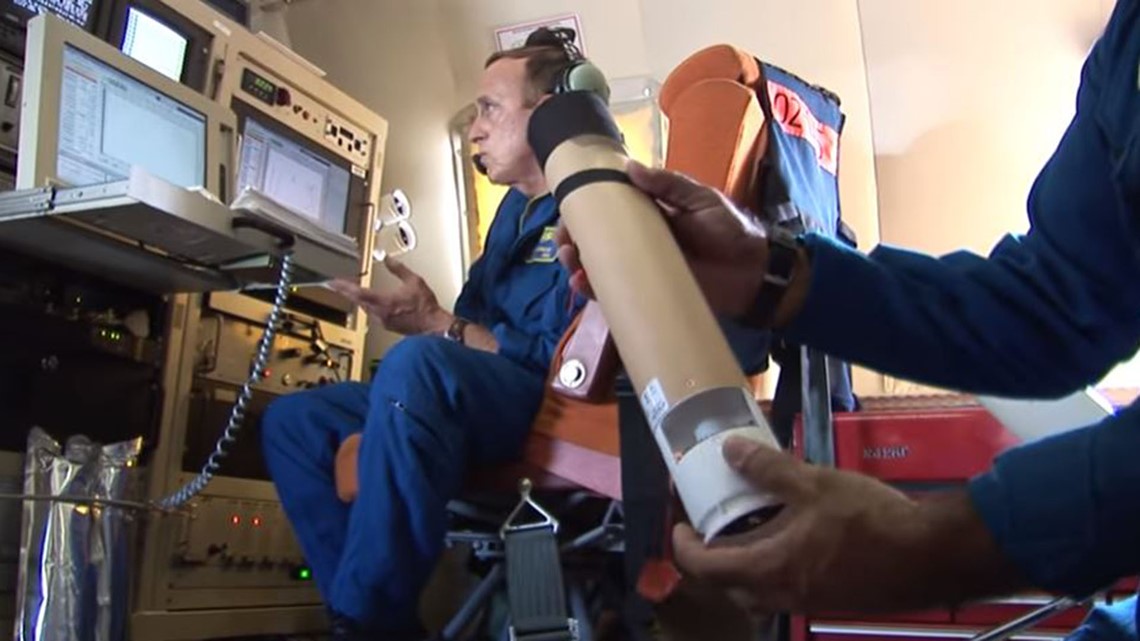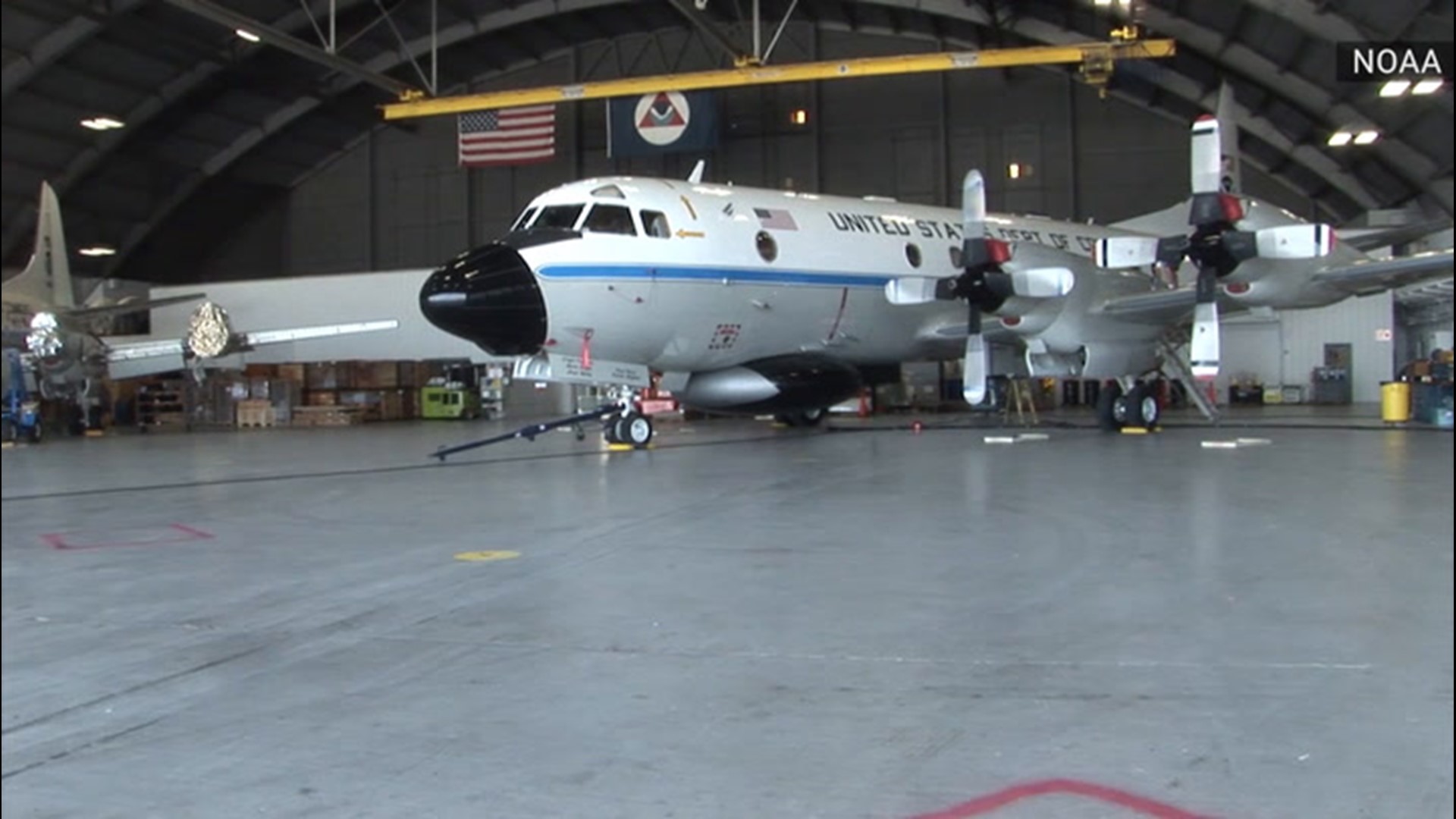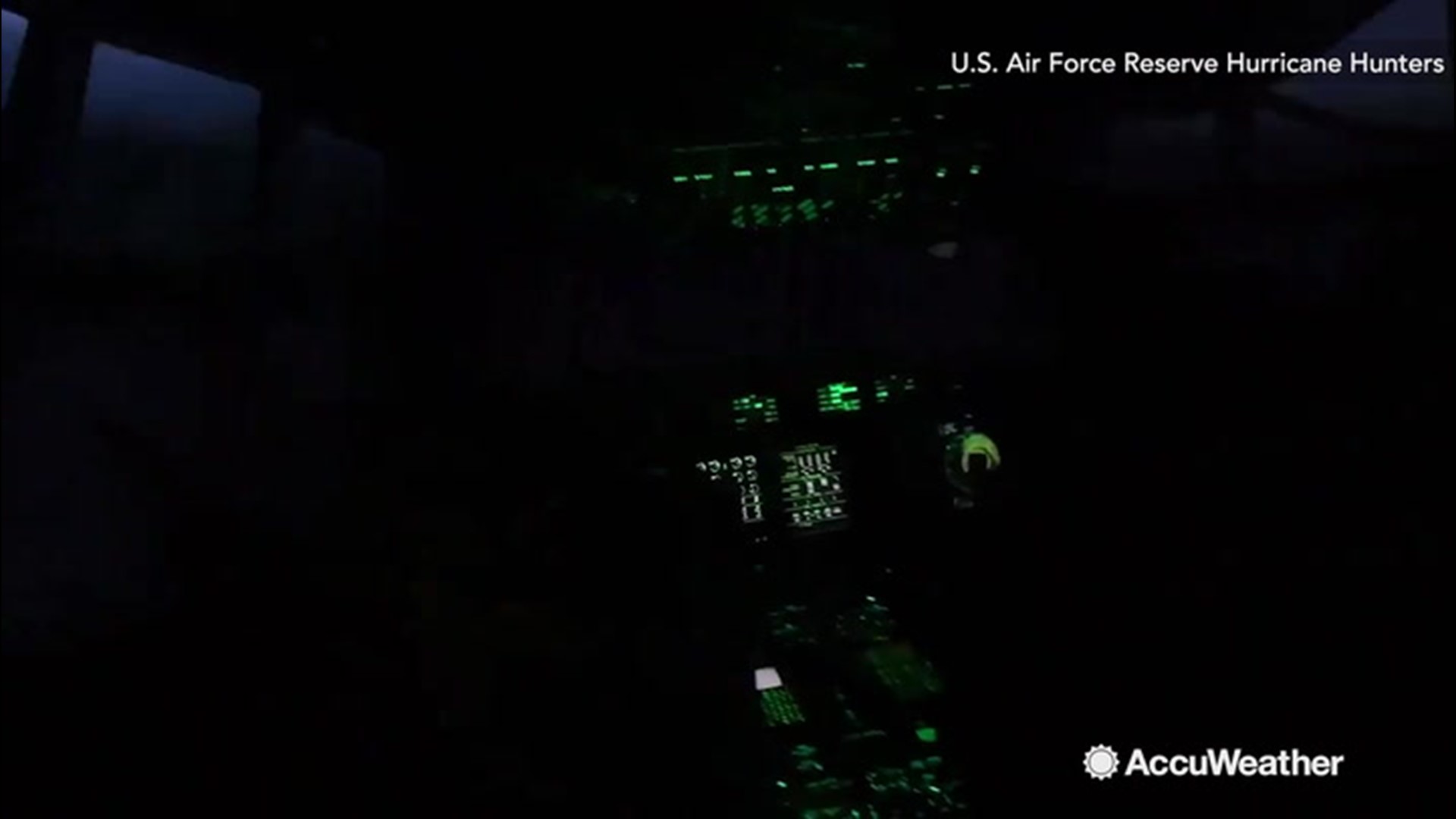Their nicknames are "Kermit" and "Miss Piggy." They fly into hurricanes to give forecasters more accurate readings to help know which way a hurricane is going to go and how powerful it's going to get.
The National Oceanic and Atmospheric Administration (NOAA) uses two Lockheed P-3 Orion turboprop planes to fly into dangerous hurricanes like Hurricane Dorian to collect readings, drop sensors and get a look inside the eye of the storm.
As the planes fly though the storm, they release dropwindsondes -- cylindrical instrument packages that transmit measurements such as temperature, wind speed, wind direction, pressure and humidity as they parachute through the storm and eventually into the ocean.


'We drop approximately 30 to 35 of them with every storm and those weather instruments are kind of like weather balloons in reverse," said Commander Rebecca Waddington, NOAA hurricane hunter pilot.
The P-3 is also equipped with Doppler radar in its tail and lower fuselage, letting the crew scan the storm vertically and horizontally.
While hurricanes are known for wind, it's their storm surge that can create one of the deadliest dangers for coastal communities. The P-3s are equipped with Stepped Frequency Microwave Radiometers. NOAA says these measure over-ocean wind speed and rain rate, which are key factors in predicting storm surge.
Each mission lasts 8-to-10 hours. AccuWeather says the planes fly at 10,000 feet -- less than 1/3 the altitude of your typical passenger jet -- and they pass through the storm at least four times per mission.
All these readings can make forecasting a hurricane 30% more accurate, according to AccuWeather.
Another tool NOAA uses is a Gulfstream IV-SP. While the P3 flies into the storm, the Gulfstream flies over and around it with a cruising altitude of 45,000 feet.



